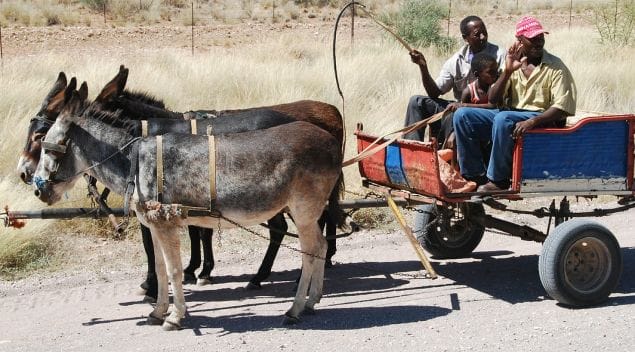Top style tips for Namibia
- Casual, comfortable clothes are the key. Dress down rather than up here.
- During the day it is hot, so our advice is to pack lightweight loose-fitting clothes in natural fabrics such as linen, bamboo and cotton that will keep you cool and are easier to wash and dry.
- The difference between daytime and night time temperatures is significant. Temperatures can plummet during the night, particularly in the cooler months. During June, July and August temperatures can drop to as low as 45 degrees F (7C). Be prepared with plenty of warm layers and a warm travel jacket. The SCOTTeVEST travel jacket is a good option as it is specifically designed for travel, with plenty of storage for gadgets and valuables.
- We suggest keeping to light, neutral colours; think khaki, green and brown. Not white, as it will get dirty and dusty very quickly.
- But it is very important to avoid camouflage or military clothing or prints, as this is illegal.
- Avoid blue or black clothing too – the tsetse flies are drawn to these colours, and their bite can give you African Sleeping Sickness.
- Long trousers and long-sleeved tops will cover you from the harsh sun and protect against mosquitoes at night.
- A wide brimmed sunhat and lots of sunscreen (we love the Riemann P20 range for 10 hour protection) and sunblock are essential, as is insect/mosquito repellent.
- When on safari, the idea is to relax and enjoy your time under the African sky, and listen to the calls of the wild all around you! Dinner dress is therefore casual and comfortable.
Shoes to pack for Namibia
- If you plan to do much walking, either on safari or with a backpack, then lightweight walking shoes or trainers are fine. The bush is not always smooth and even, so anything that minimises the chance of a twisted ankle is a good idea. Try Hotter shoes, they are amazingly light and comfortable.
Clothing tips for women
- Leave your valuables and jewellery at home, you really won't need them.
- A skirt or loose-fitting trousers are good in the heat and will protect you from the sun.
- A pashmina or sarong is a versatile item that you can use for sun protection or to ‘glam' up the simplest of outfits if you feel like a change.
Clothing tips for men
- There are no specific things to bring to your attention, check out our packing list for our suggested capsule wardrobe.
Pack for the weather
- This is a semi-desert climate – so it's hot during the day and cold at night.
- Whenever you travel you will need warm clothes for the evenings – add in a fleece, pashmina or jumper. light wool is a good choice to wear against your skin as it naturally helps to regulate your body temperature. It keeps you warm in the cold, wicks away moisture when it's hot, and doesn't retain odours – even after prolonged wear.
- We love the Weather+ app – it gives an accurate 6 day forecast for day and night, which when you're planning from home is really helpful. You can keep all the places you've been to too – a nice way to remember your trip 🙂 Download for iPad/iPhone or Android
Regions of Namibia
- If your budget can stretch to it, take a balloon ride over the Namib desert.
Other things to pack
- A soft-sided rucksack is more practical than a hard suitcase for safari holidays – it's easier to fit into the small planes or transfer vehicles. Using packing cubes can help to keep your belongings tidy whilst compressing the volume too.
- Internal flights often have much lower baggage limits than your international carrier. Use an accurate luggage scale to ensure you keep within the weight allowance.
- Pack a sling bag or lightweight day sack for sightseeing trips and game drives.
- You may like to carry a solar powered charger too, to boost your battery when out and about – you don't want to miss that great photo opportunity!
- To use electrical gadgets you may need a travel adapter plug, and also a step down voltage converter if your devices are not designed for the local voltage (220V).
- Don’t drink or even brush your teeth in tap water. Consider taking a LifeStraw Filtration Water Bottle.
- Avoid paying unexpected baggage fees – use an accurate luggage scale to ensure you keep within the weight allowance. Don't forget to leave room for souvenirs on the way home! You'll find a range of wooden carvings, woven baskets, bead work and the like. The craft centre in Windhoek is an excellent place to browse.
